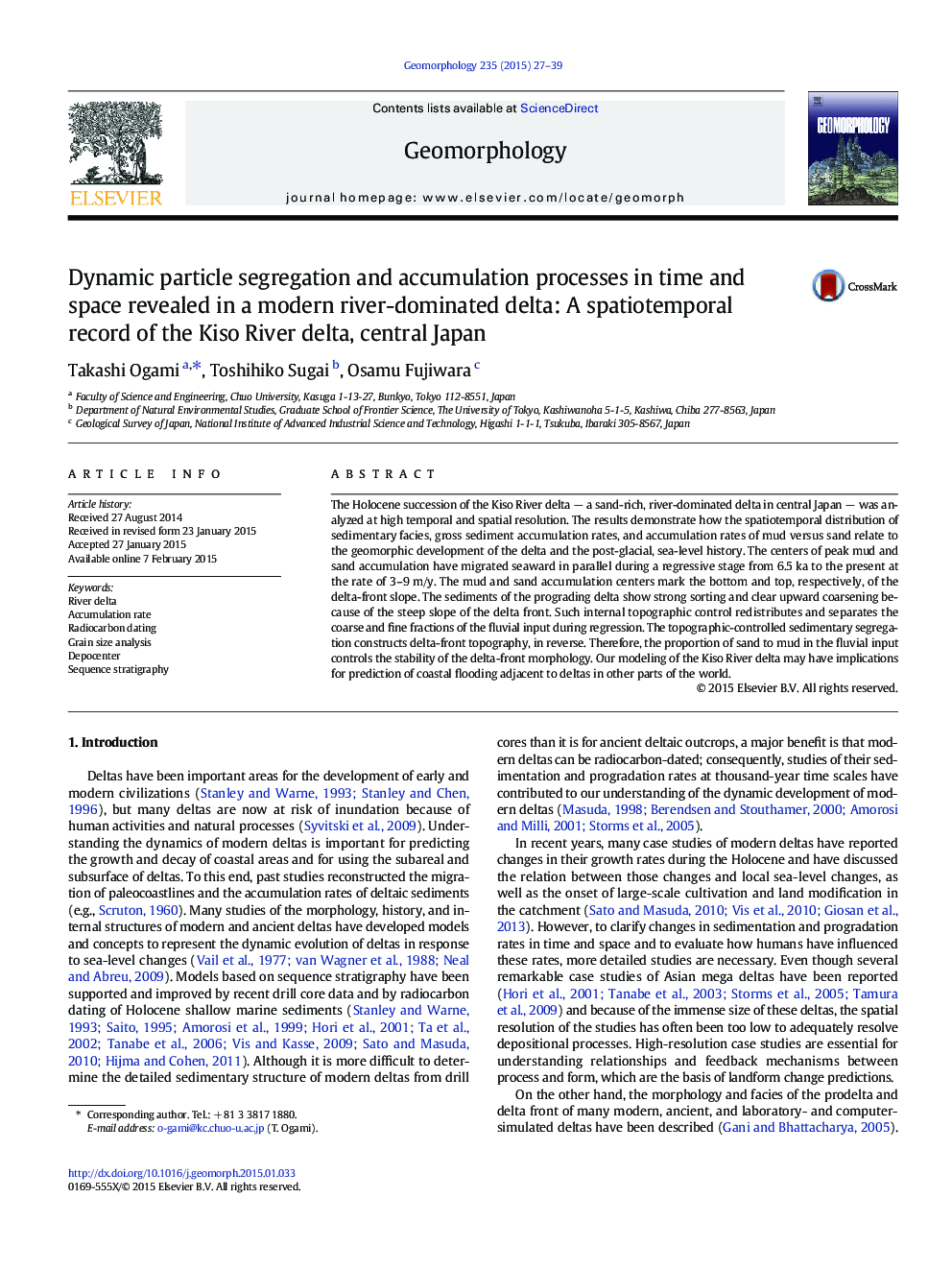| Article ID | Journal | Published Year | Pages | File Type |
|---|---|---|---|---|
| 4684234 | Geomorphology | 2015 | 13 Pages |
The Holocene succession of the Kiso River delta − a sand-rich, river-dominated delta in central Japan − was analyzed at high temporal and spatial resolution. The results demonstrate how the spatiotemporal distribution of sedimentary facies, gross sediment accumulation rates, and accumulation rates of mud versus sand relate to the geomorphic development of the delta and the post-glacial, sea-level history. The centers of peak mud and sand accumulation have migrated seaward in parallel during a regressive stage from 6.5 ka to the present at the rate of 3–9 m/y. The mud and sand accumulation centers mark the bottom and top, respectively, of the delta-front slope. The sediments of the prograding delta show strong sorting and clear upward coarsening because of the steep slope of the delta front. Such internal topographic control redistributes and separates the coarse and fine fractions of the fluvial input during regression. The topographic-controlled sedimentary segregation constructs delta-front topography, in reverse. Therefore, the proportion of sand to mud in the fluvial input controls the stability of the delta-front morphology. Our modeling of the Kiso River delta may have implications for prediction of coastal flooding adjacent to deltas in other parts of the world.
